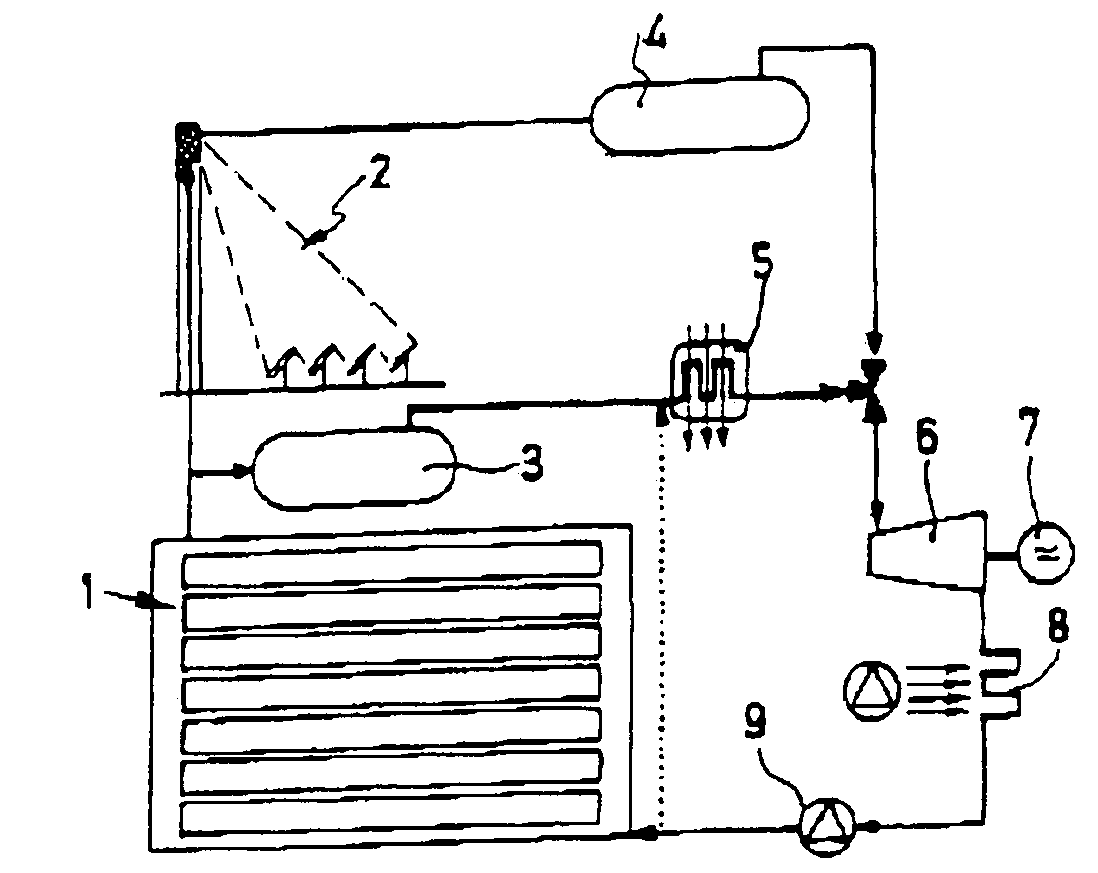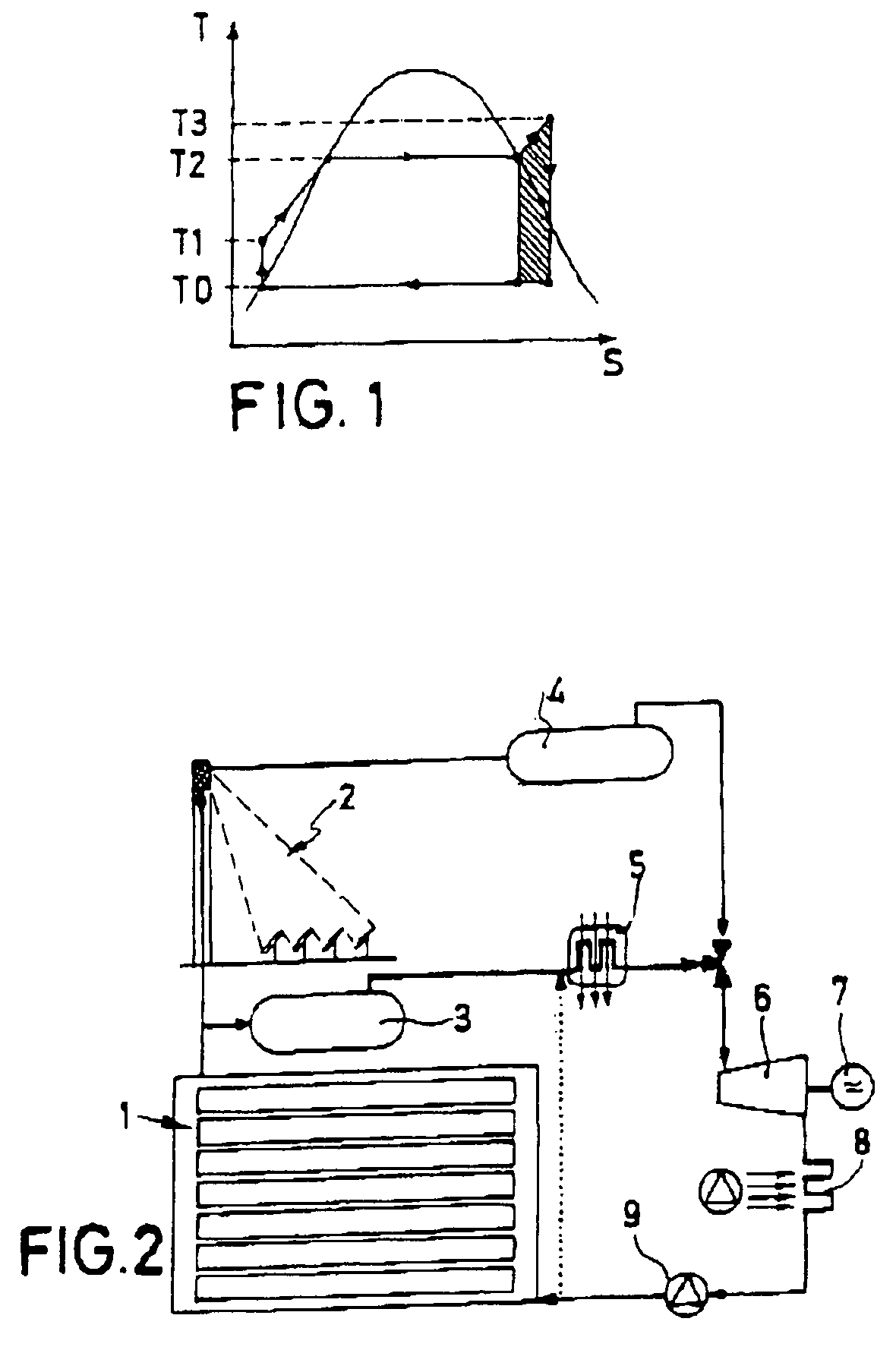Solar concentrator plant
a concentrator and solar energy technology, applied in the direction of pv power plants, machines/engines, light and heating equipment, etc., can solve the problems of increasing the cost per msup>2/sup>built with respect to two-dimensional concentrator systems, reducing the potential for conversion to work, and reducing the temperature availabl
- Summary
- Abstract
- Description
- Claims
- Application Information
AI Technical Summary
Benefits of technology
Problems solved by technology
Method used
Image
Examples
Embodiment Construction
[0013]The concept of the solar concentrator plant of the invention is based on integrating the advantages of two-dimensional systems, such as parabolic trough collectors (PTC) for increasing the temperature of the heat transfer fluid to the medium temperatures at which these types of systems are more efficient, and those of three-dimensional concentrator systems such as tower systems and heliostat fields, which allow reaching high temperatures, using the latter mainly to overheat the heat transfer fluid beyond the temperature already attained using the two-dimensional systems, to temperatures that allow a more efficient integration in the thermodynamic cycle. From the point of view of the cost of the installation, using three-dimensional concentration techniques for the initial heating stage is more costly than using two-dimensional heating systems for this stage. Currently, either two-dimensional concentration systems are used for both stages that cannot reach the optimum operation...
PUM
 Login to View More
Login to View More Abstract
Description
Claims
Application Information
 Login to View More
Login to View More - R&D
- Intellectual Property
- Life Sciences
- Materials
- Tech Scout
- Unparalleled Data Quality
- Higher Quality Content
- 60% Fewer Hallucinations
Browse by: Latest US Patents, China's latest patents, Technical Efficacy Thesaurus, Application Domain, Technology Topic, Popular Technical Reports.
© 2025 PatSnap. All rights reserved.Legal|Privacy policy|Modern Slavery Act Transparency Statement|Sitemap|About US| Contact US: help@patsnap.com



